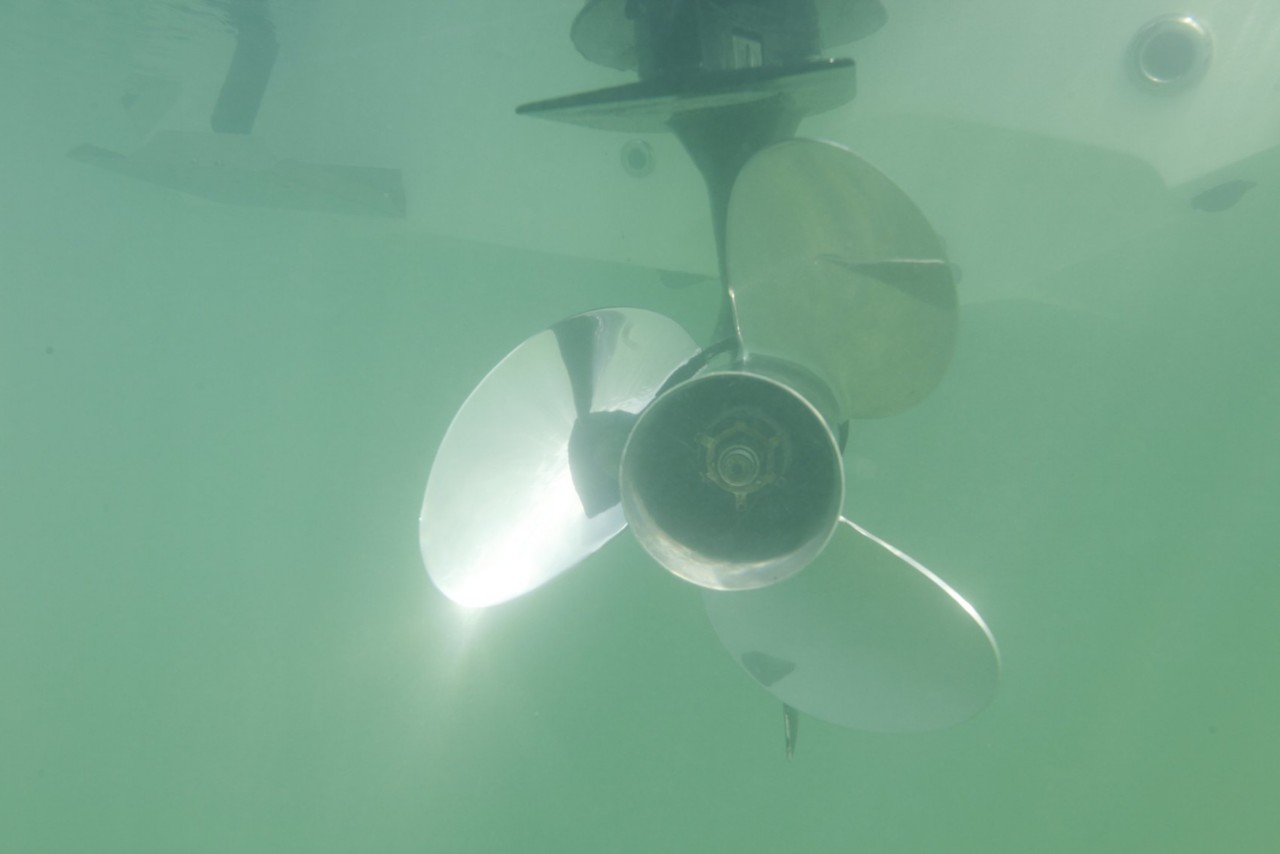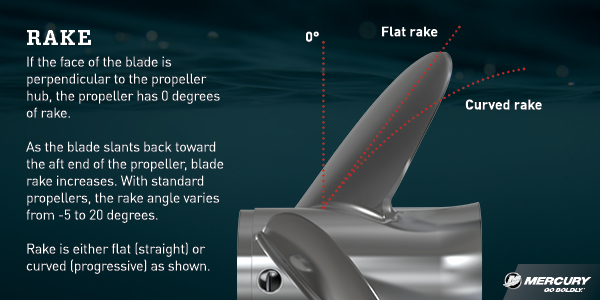The Effects of Rake
Mercury propellers designed for lower-horsepower outboard and sterndrive applications, like the aluminum Black Max® and stainless-steel Vengeance® models, have about 15 degrees of rake. These props are designed to operate fully submerged in the water and offer good, all-around performance. An extreme example is the Black Max® Kicker prop designed for Mercury ProKicker outboards, which has a minimal amount of rake and is designed to deliver outstanding thrust in low-speed trolling situations.
High-performance props may have as much as 30 degrees of rake. More rake generally enhances propeller performance when the blades break the water surface, for example on a bass boat with an outboard mounted on a jack plate that’s also run at a high trim angle, or a performance boat with a sterndrive mounted high on the transom to reduce drag. In these situations, a prop with more rake, like the stainless-steel Mercury Fury® and Tempest® Plus models, can better hold the water as it’s being thrown into the air and produce more thrust than a prop with flatter rake.
On lighter, faster boats a prop with more rake will often lift the bow higher, reducing drag and increasing top speed because less hull is in the water. However, a high-rake prop may cause too much bow lift and instability on a hull that naturally carries its bow high at speed.
Rake is just one of many elements considered by Mercury prop engineers when designing a propeller model for a specific application. Boat speed and boat type are two factors utilized by the Mercury Prop Selector Tool, a great resource that will help you narrow down prop options by answering five basic questions about your boat and engine, and the ways you use them.
*Due to the complexity and variations of propeller blade rake, Mercury Marine does not publish rake angles of its propellers.





